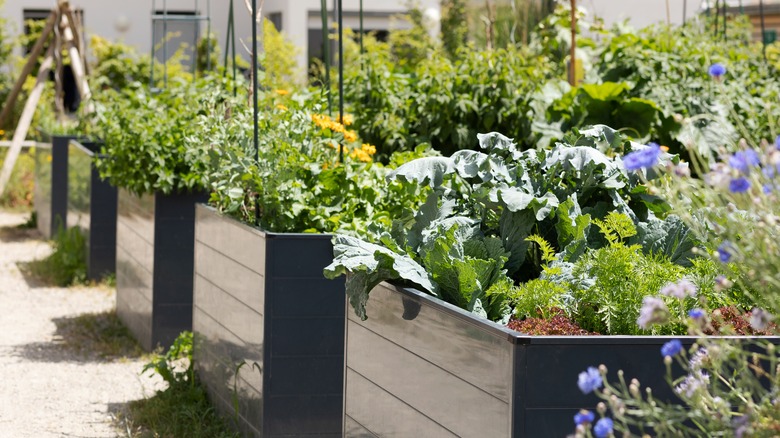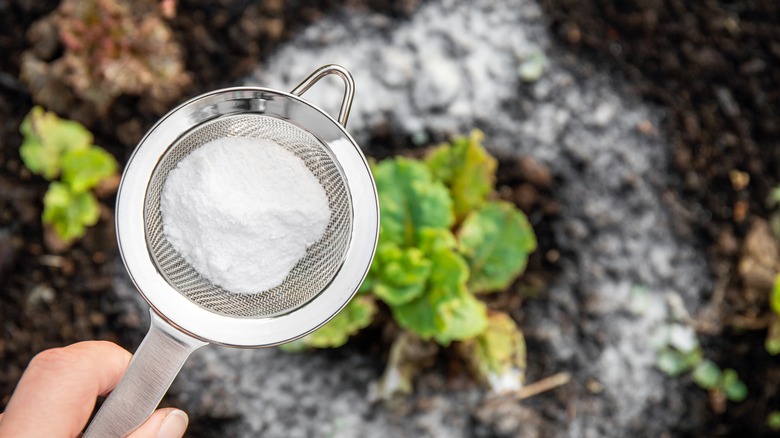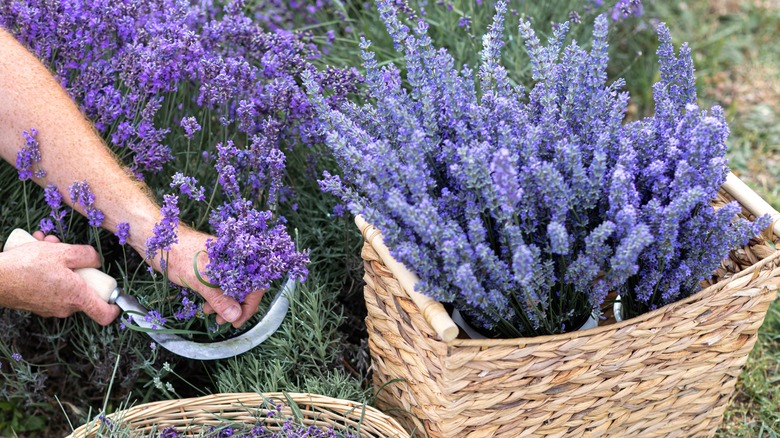The Colorful Herb That Will Benefit From A Dash Of Baking Soda
Some of the hardiest and easiest plants to grow are herbs. They'll thrive inside or outside, in a pot, a raised bed, or in the ground. Collectively, they offer a number of savory and floral aromas, and they bring their delicious leaves and oils to thousands of recipes from every culinary tradition. Herbs have been cultivated for centuries, with evidence of use in both Egypt and China thousands of years ago.
One of the most beneficial and versatile herbs to have in your garden is lavender. This plant, a native of the Mediterranean region, thrives in chalky, rocky, and sandy soil, with warm temperatures. To grow healthy lavender plants, the most important things to do are to give them full sun (ideally 8 hours of sunlight a day) and to set them in well-drained, slightly alkaline soil. We've mentioned the difference between alkaline and acidic soil before. Simply use test strips to check your soil's alkalinity. For lavender and other alkaline-loving plants, the pH should be between 6.7 and 7.3.
Increasing your soil's pH
After testing your soil's pH, determine if you have sandy, loamy, or clay soil, because the soil type will determine how much material to add to raise the pH level. If you're using baking soda, mix one tablespoon into a gallon of water. But be careful, because baking soda (sodium bicarbonate) is actually a type of salt, and sodium isn't great for plant matter, breaking down stems and leaves. When applying it, funnel the treated water into the ground itself, and try not to wet the plants.
You can also use limestone or wood ash to raise the pH for your lavender, although be sure the ashes are dry and they don't come from chemically treated wood. Other ways to raise the alkalinity of your soil is by using agricultural lime, or even pulverized eggshells, since the calcium in the shells will increase the pH level. Once you've applied lime to your soil, a light application of baking soda will keep the soil at the right level to help your lavender thrive. Be sure to keep testing the soil so you don't overdo it.
Beautiful and beneficial lavender
If the soil is too acidic, lavender may bloom in place for one growing season, maybe even two, but with the roots growing in soil that lacks alkalinity, eventually the plant will die. Another misstep is to plant lavender in clay soil which is filled with moisture and causes the roots to rot, killing the plants even despite already being alkaline. If the soil in your garden is naturally clay, you'll need to create an environment for your lavender to thrive. To do this, improve the drainage in the area where you want your lavender by adding some organic compost and gravel, or consider planting it in pots where you can best control the soil quality. Planting lavender in areas that are too wet or too shady will kill it, and not even an application of baking soda will help.
Not only does lavender look and smell great to us, but it's also a pollinator that attracts bees and butterflies to the garden while deterring pests like moths, ticks, and fleas. When lavender is companion planted with edible plants, it also deters mice and other small mammals from snacking on your fruits and veggies. By making sure your lavender plants have everything they need to bloom, be prepared to enjoy weeks of colorful, aromatic flowers on slender green stems. Depending on the number of plants you have, you can harvest lavender repeatedly during the growing season.


